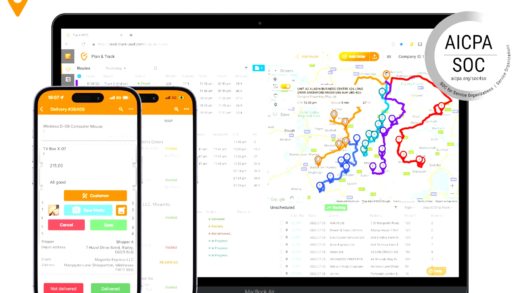This article explores the implications of living in states without income tax, detailing the benefits and drawbacks. It examines federal tax benefits, compares no income tax states with high income tax states, and outlines key considerations for potential movers. Readers gain insight into how state tax structures affect overall financial health and public services.
The Nine States Without Income Tax
States without income tax can offer significant tax benefits for residents. Currently, there are nine states in the United States that do not impose a state income tax:
- Florida
- Texas
- Washington
- Wyoming
- Alaska
- South Dakota
- New Hampshire
- Tennessee
- Nevada
Each of these states has its unique appeal. For instance, Florida is known for its warm climate and beautiful beaches, while Texas boasts a robust economy and no state income tax, attracting many businesses and individuals. Understanding which states to consider can help individuals looking to maximize their financial situation.
How No Income Tax Affects Your Overall Tax Burden
Living in states without income tax can significantly affect your overall tax burden. While residents might save on income tax, it is essential to analyze the entire tax landscape. For example, states like Florida and Texas might have higher sales and property taxes to compensate for the lack of income tax. This means that while you may not pay state income tax, your overall tax responsibility could be similar to or even higher than in states with income tax.
Moreover, residents should consider how no income tax impacts their disposable income and financial planning. For many, the absence of state income tax can lead to better cash flow, enabling them to save or invest more. However, it’s crucial to weigh these benefits against potential higher costs in other tax areas.
Alternative Taxes in No Income Tax States
In states without income tax, alternative taxes often fill the revenue gap. Common alternatives include higher sales taxes, property taxes, and various fees. For instance, while Florida doesn’t have an income tax, it has a sales tax rate of 6%, with local jurisdictions adding up to an additional 2.5%.
Additionally, property taxes can be a significant source of revenue in these states. Texas, for example, has some of the highest property tax rates in the nation. Residents must be aware of these taxes and plan accordingly, as they can impact the overall cost of living.
In conclusion, while living in states without income tax can present several advantages, it is vital to consider alternative taxes and how they affect the overall financial picture.
Downsides of Living in No Income Tax States
Living in states without income tax can seem attractive, but there are notable downsides. One significant drawback is the reliance on alternative forms of taxation. As mentioned earlier, these states often compensate for the lack of income tax with higher sales and property taxes. For example, in Texas, the property tax rates are among the highest in the nation, which can lead to a heavier financial burden for homeowners.
Additionally, public services may not be as robust in no income tax states. Funding for education, healthcare, and infrastructure can suffer, leading to a lower quality of services compared to states with income taxes. This can affect residents’ daily lives and the long-term viability of these services.
Moreover, the lack of an income tax doesn’t guarantee lower overall expenses. Many residents find that the cumulative effect of higher sales taxes and fees can offset the benefits of not paying income tax. As a result, individuals considering a move to these states should weigh these potential drawbacks carefully.
Funding Public Services Without Income Tax
States without income tax must find alternative ways to fund public services. This often involves a combination of higher sales taxes, property taxes, and various fees. For instance, Florida funds its public services primarily through sales tax, which can reach up to 8.5% when local taxes are included.
Moreover, states like Washington rely heavily on a sales tax that is among the highest in the country. This reliance on consumption taxes can lead to volatility in funding, especially during economic downturns when spending decreases. Residents need to understand that while they may not see income tax deductions, they will still contribute to state revenue through other means.
Additionally, some no income tax states have implemented specific fees for services like vehicle registration, which can be a hidden cost for residents. Understanding these funding mechanisms is crucial for anyone considering moving to these states.
Benefits of Living in No Income Tax States
Despite some downsides, living in states without income tax offers numerous benefits. The most significant advantage is the potential for increased disposable income. Without state income taxes, residents can keep more of their earnings, which can lead to greater savings or investment opportunities. This financial freedom allows individuals to allocate resources towards retirement, education, or even leisure activities.
Additionally, these states often attract businesses, resulting in a vibrant job market. States like Texas have seen significant economic growth, creating numerous job opportunities for residents. Furthermore, the absence of an income tax can be a considerable draw for high-income earners and entrepreneurs looking to maximize their profits.
Another benefit is the overall simplicity of tax filing. Without state income tax, residents face a less complicated tax season, saving time and reducing stress. This streamlined process can be especially appealing to young professionals and families.
In conclusion, while there are considerations to keep in mind, the benefits of living in no income tax states can be substantial for many residents.
Federal Tax Benefits in No Income Tax States
Living in states without income tax can provide specific federal tax benefits for residents. One of the key advantages is the potential for higher disposable income, as residents do not pay state income tax. This allows individuals to retain more of their earnings, which can be beneficial when filing federal taxes. Additionally, certain deductions and credits at the federal level may apply differently for residents in no income tax states, particularly when it comes to itemizing deductions.
For example, federal tax brackets and standard deductions remain the same regardless of state income tax status. However, the overall tax burden can feel lighter due to the absence of state income tax. It’s essential for residents to stay informed about how these federal benefits interact with their financial situation, especially when considering retirement savings and other investment opportunities.
Comparing No Income Tax States and High Income Tax States
When comparing no income tax states to those with high income tax rates, the differences become apparent. States without income tax, such as Florida and Texas, often attract individuals seeking financial relief. Conversely, high income tax states like California and New York provide robust public services funded through their tax systems.
Here’s a quick comparison:
- Tax Burden: No income tax states often have higher sales and property taxes, while high income tax states may offer lower sales taxes.
- Public Services: High income tax states generally have more comprehensive public services, including better-funded education and healthcare systems.
- Job Opportunities: No income tax states often have booming job markets due to lower business taxes, attracting companies and entrepreneurs.
This comparison highlights that while no income tax states can offer immediate financial benefits, the overall quality of life and public services can differ significantly. Individuals must weigh these factors when deciding where to live.
Considerations Before Moving to a No Income Tax State
Before relocating to a no income tax state, several considerations should be evaluated. First, it’s crucial to understand the alternative taxes that may be higher in these states, such as property and sales taxes. This knowledge can help you gauge the overall financial impact of the move.
Additionally, consider the quality of public services in these states. While the absence of income tax can be appealing, it might come at the cost of less funding for essential services. Assessing local schools, healthcare facilities, and infrastructure can provide insight into what living in these states will be like.
Lastly, it’s wise to think about long-term financial planning. Without state income tax, residents may feel a cash flow boost initially, but unexpected costs from higher property taxes or fees could arise. Evaluating personal financial goals and how they align with living in a no income tax state is vital for making an informed decision.





Comments are closed.